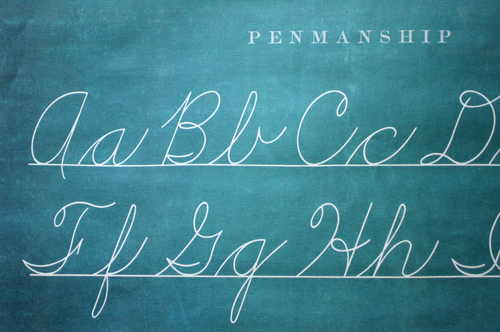
Keyboards. Smart phones. Twitter. MS Word. With all that typing, who still writes by hand? You do, if you’re taking the paper-based IELTS. And while the IELTS is also available on computer for some test-takers, the majority of IELTS students will be taking the exam with good old-fashioned pencil and paper.
The new IELTS Handwriting Rules
The people who make the IELTS exam recently revised some of the rules for handwritten responses on the paper-based IELTS. Previously, it was acceptable to write both the IELTS short answers (IELTS Reading and IELTS Listening) and the IELTS essays (IELTS Writing) in all CAPITAL letters. However, you can no longer use all CAPS in your IELTS Writing essays. Also note that the IELTS only allows all capital letter responses in Reading and Listening so that handwriting can be as clear as possible. If you are taking the computer-delivered IELTS, you will need to use lowercase letters in your short answers and your essays alike, unless there is a specific reason to use a capital letter.
The test makers are in the process of updating their various official IELTS websites. As I write this, some parts of the IELTS official website network still list the old rules. But you can find the new rules in this official IELTS FAQ under the question “Can I write in Capital Letters?”
Does Your Handwriting Need to be Good on the Paper-Based IELTS? Yes, it Does!
This raises a question that you don’t need to think about on computerized exams or writing assignments: can your handwriting hurt your score? It absolutely can.
This makes sense when you think about it. If your handwriting is bad enough, the IELTS examiners won’t understand what you’ve written. They’ll have no choice but to penalize you in that case.
This is a very frustrating way to lose points on the exam. How awful would it be to write a well-thought out, well-organized essay, free of serious errors, and still get low marks just because of your handwriting?
Fortunately, this is also a very avoidable way to lose points. All you have to do is make sure your handwriting is easy to read.
Simple, right? Well… maybe not so simple at first. You probably don’t write things by hand often. So you’ll need to practice some good old fashioned penmanship as you prep for the IELTS.
But practice alone isn’t always enough. You also need some sort of guidance to make sure your handwriting is truly legible to other people.
You can probably read your own handwriting more easily than other people can. So how can you know if you’re on the right track? How can you know that your handwriting will be understood by others, including the IELTS Writing scorers? To find out, keep reading!
IELTS Handwriting Tip # 1: Don’t Use Cursive
Cursive is a special style of writing where the letters “flow” into each other, and all letters are written with just one or two continuous curving lines. If you’re still not sure what I’m talking about, here is a handwriting guide for cursive. And here is a page that is written in cursive.
If this is the first time you’ve ever seen cursive, then your native language probably doesn’t use the English alphabet. In that case, don’t worry about cursive at all. It’s not something you’ll ever need to use. And clearly, you’ll be able to avoid using it on the IELTS.
This leaves the rest of you. Those familiar with cursive may know that this style of writing is a time-saver… for you at least. Rapidly writing those flowing letters really can help you write more quickly. But it doesn’t save time for the poor people who have to read it. Cursive gets “messy” a lot easier than non-cursive–or “print”–handwriting.
So don’t use cursive to save yourself time. Instead, learn to print more efficiently. That saves everyone time. And it can save you points on the IELTS Writing section.
IELTS Handwriting Tip # 2: Take a Look at a Handwriting Guide
Remember that cursive handwriting guide I showed you in the section above? Find a few other handwriting guides that are kind of like that one, but not cursive. You probably already know how to form printed words in English, but taking a quick look at a handwriting guide will remind you of the exact way each letter is formed.
To find a handwriting guide, look for “English handwriting guide” in a search engine, or look for the font “Comics Sans” in the word processing program on your computer. (Comics Sans is basically a way to type letters that look like really good printed English handwriting.)
Or just check out this English handwriting guide from the Auburn University website….
….Or take a look at this image of all the letters from the Comics Sans font:

IELTS Handwriting Tip # 3: Show Your Handwriting to Other People
Avoid cursive. Print and print well. These are the basic things you need to do, if you want your handwriting to be understandable to others. But once you’ve done those things, you want to know you’ve done them correctly.
That’s where you give your handwriting the real test: actually show it to other people. Can your friends, classmates or colleagues read your English handwriting? If so, great! If not, keep working on it. You’ll get there. And as you work toward that goal, make sure you prepare for every aspect of IELTS Writing. Magoosh’s complete guide to the IELTS Writing section is a great place to start.





